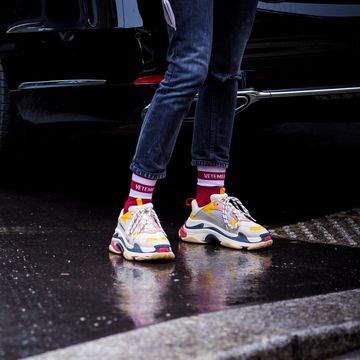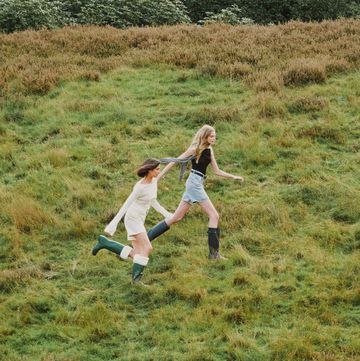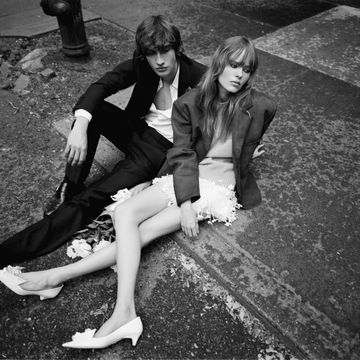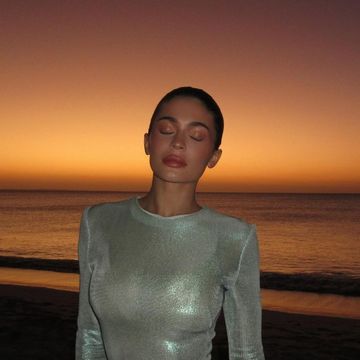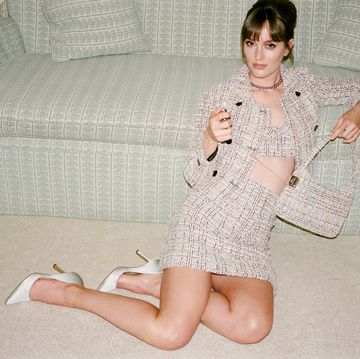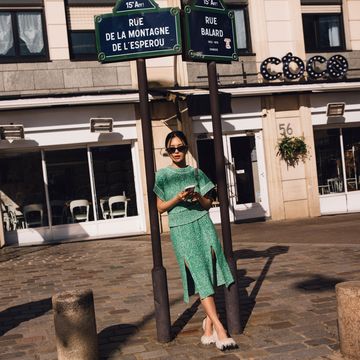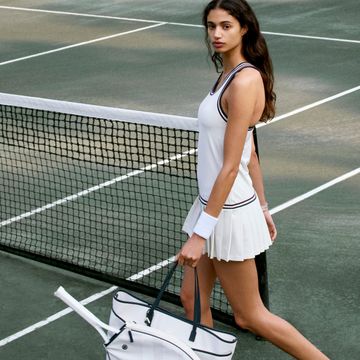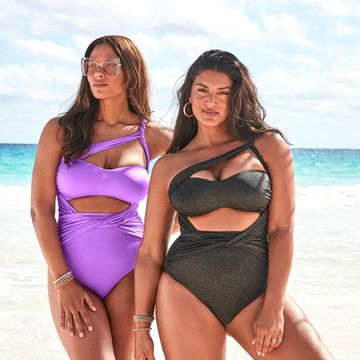There is nothing quite as iconic as a classic Chanel tweed piece. If you've had the honor of wearing one—a jacket, a dress, a skirt—you know that its texture, its weight, and its very aura are the things magic is made of.
Her use of the now legendary fabric was not only inspired by menswear, but by a man—and a Duke no less. After borrowing sportswear from her beau, the Duke of Westminster, Chanel realized the comfortable, supple fabric had a sophisticated quality that would lend itself well to her designs. Beginning in 1924, Chanel enlisted a Scottish factory to produce her iconic tweed fabrics for everything from sportswear to suits and coats. She'd choose colors she was inspired by from the Scottish countryside, bringing back leaves and bits of earth to her manufacturers.
Related: Looking Back: Coco Chanel
The tweed trend spread like wildfire, with a magazine image of actress Ina Claire clad in a brown tweed Chanel dress igniting the spark. The look quickly became popular throughout couture houses in Paris.
Mademoiselle Chanel switched factories in the '30s to northern France and began combining her classic tweeds with wools, silks, cottons, and even cellophane to give them a more high fashion (and lighter weight) style.
Today, tweed remains a strong part of the Chanel story and is made in the House of Lesage out of Paris. Since Karl Lagerfeld has been at the helm of the fashion house, he's continued to reimagine the traditional fabric, and we believe Mademoiselle Chanel wouldn't have wanted it any other way.
Related: Chanel's Supermarket Sweep
"The tweed is made by weaving the warp and weft, using a variety of different kinds of threads which creates a unique and somewhat irregular appearance. The warp – vertically strung – is the background of the fabric, the base that will support the assembly of materials. There can be up to 12 different threads used for a single warp. The weft – woven horizontally – gives the fabric its unique character and can have an unlimited number of threads. Tight, perforated, textured, thick, with a relief, plaited, random, twill… the potential number of effects is endless," the house says.
A tireless process? Sounds like it. But one well worth it if it ends up being a fabulous blazer, I think.
Related: Keira Knightley Stars in New Chanel Ad
Photos: Courtesy of CHANEL

